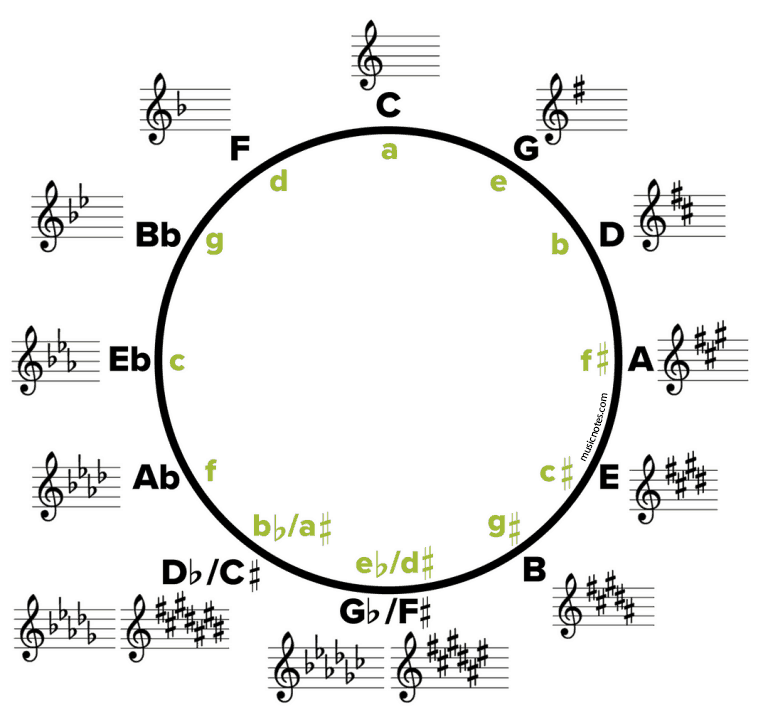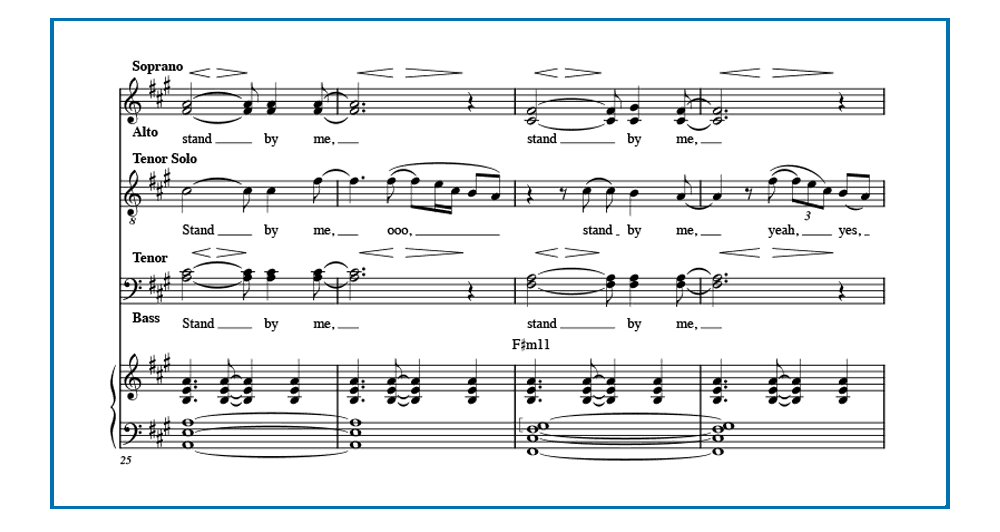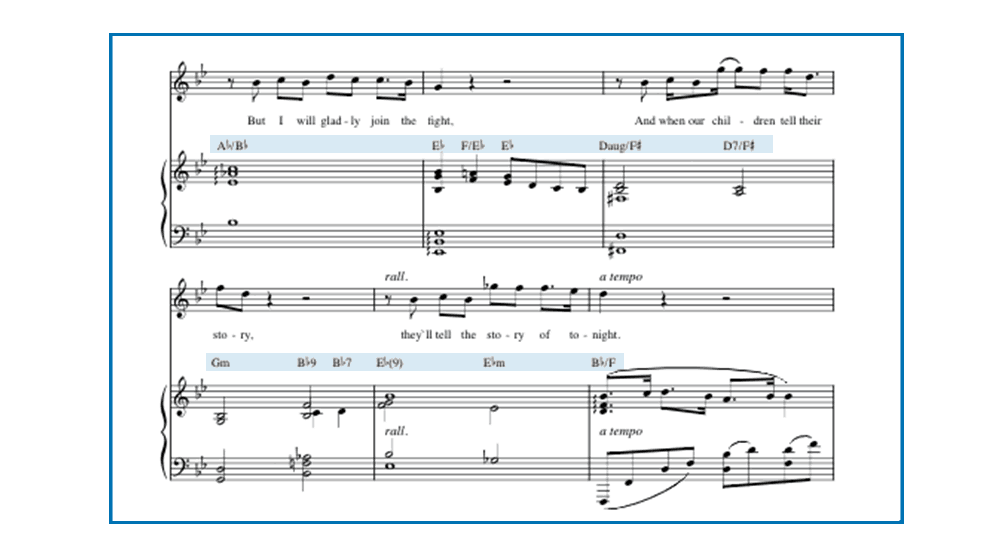10 Essential Tips for Piano Accompanists

As a pianist, collaborating with other musicians is a fantastic experience. It will improve your piano playing skills immensely, and it will expose you to new music and new techniques. Not to mention, it’s a lot of fun to work with other musicians towards a common goal.
In many ways, accompanying requires entirely different skills than solo piano playing does. When you are working with other musicians, you have to be in a very different mindset than when you are working alone. Furthermore, the role of the accompanist can vary quite a bit depending on who you are accompanying and how many musicians are involved.
You may be working with an individual soloist such as a singer or instrumentalist, a small group of singers or instrumentalists, or a full choir or large ensemble. All of these situations present their own unique issues that the accompanist needs to be aware of and prepare for. Here are 10 things to keep in mind as you are practicing for an accompanying gig, as well as when you are performing with other musicians.
Preparing
1. Keep up Your Sight Reading Practice
Accompanists are expected to sight read frequently, so you’ll want to always be improving your sight reading skills. Practice sight reading on a regular basis to prepare for times when you are asked to sight read on the spot.
Keep in mind that sight reading in a professional setting can be stressful. It’s a fast-paced skill that requires you to think on your toes and react quickly. While you can’t prepare for every type of sight reading that will come up in accompanying situations, having a strong sight reading practice in your routine will take some of the pressure off when you are presented with a new opportunity.
Read here for ways to improve your sight reading skills.

2. Confirm the Tempo, Roadmap, and Details with the Soloist or Leader
Before you begin practicing, make sure to discuss important details with the soloist or ensemble leader.
Ask for tempo markings and be prepared for any tempo changes that might occur throughout the music. Even though you are preparing for a certain tempo, be ready for it to change in rehearsals or even in performances.
It’s common for soloists or conductors to decide to speed up or slow down as the music starts to come together.
In the same way, make sure you understand the road map of your music. Have a clear idea of where repeats or codas occur and ask if any changes have been made to the score.
Watch out for fermatas, ritardandos, accelerandos, time signature changes, and other symbols that affect the timing of the music.
3. Practice Rhythmically and for Continuity
One of the most important aspects of your job as the accompanist is that you have to keep the music going at a consistent tempo no matter what.
Solo pianists often develop a habit of allowing some give and take in the tempo, simply because they can. However, once you add another musician to the mix, playing very rhythmically with excellent continuity is essential. For this reason, it’s imperative for accompanists to practice with a metronome or rhythm track.
Additionally, practice getting all the way through the piece and resist the urge to stop playing to go back and fix mistakes or repeat problematic sections of music. It’s inevitable that at some point or another you’ll miss a note or two while performing, and you need to be prepared to keep going, as your solo or ensemble can’t stop and wait for you to catch up.
4. Know Your Key Signatures
You’ll likely have to play in every possible key at some point in your accompanying career, so practice your scales and be ready to play in any key.
Most pianists have their favorite keys that they enjoy playing in or find easy to read. However, some instruments favor keys that are less common for solo pianists. Often the range of a singers voice lends itself best to keys that are even less common on the piano.
Keeping every scale and its corresponding chord progression under your fingers will ensure that you have the skills you need to move to different keys when necessary.

Key Signatures using the Circle of Fifths.
5. Practice Reading in 4-Part Harmony
Not only is reading music in 4-part harmony an excellent way to practice sight reading, but it’s also an important way to prepare for rehearsing with singers or choirs.
Even when there is an accompaniment part written, the pianist is often asked to play 4-part harmony to help the singers learn their parts. Also, be ready to play any 2 lines of the 4-part harmony. You may be asked to play only the outer voices (bass and soprano), or the inner voices (tenor and alto) as sections need extra help in solidifying parts. Pianists aren’t accustomed to reading music this way, so be sure to include it in your practice.
6. Learn How to Read Chord Charts
Reading chord charts is a crucial skill for accompanists, even if there is a full piano accompaniment part written out.
Sometimes it is more helpful to a soloist or small ensemble to have a strong chordal harmonic foundation than to have an elaborate piano part. Other times, musicians need a combination of both. Work to incorporate chord playing into an accompaniment part so that you can transition as needed.
Some pianists find that playing from a chord chart is easier than sight reading an accompaniment part. It definitely allows for more freedom and offers the accompanist room for creative improvisational playing. However, chord playing not ideal in every situation, so you’ll need to observe when it might be better to stay true to the written accompaniment and when you can veer away from it.
Performing
7. Know If You Are Leading or Following
One of the unique aspects of accompanying is that your role will vary depending on the circumstances. If you were working with an individual professional soloist, you would consider yourself a supporting role. You would want to follow their lead and look to them for cues and direction on musical interpretation.
Even though you may be following another musicians lead, this is still a very active role because you’ll need to be ready to take action on the spot. The soloist might choose to make a cut in the music, take extra repeats or alter the tempo. Watch and listen carefully as you are playing along.
However, there are other times that you’ll be in a position of the leader. If you’re working with a less experienced student soloist, they will likely look to you for direction. Also, some small ensembles may consider the pianist to be the leader.
In the cases where you are called upon to lead, you’ll want to give clear cues to help the other musicians know when to come in.
You also may need to find ways to communicate things like tempo, changes in the music, and how to cut off notes together. This is usually accomplished with hand gestures or nodding, similar to conducting.
8. Keep a Bass Line Going
When a solo pianist is struggling to keep both hands going, they will almost always drop out the left hand and hand keep the right hand playing. It might seem counterintuitive to a lot of pianists, but keeping the left hand going while accompanying is more important.
Remember that the left hand is providing a strong rhythmic foundation for the other musician or musicians. Often, melodies and parts of the right hand’s music are doubled by the soloist or ensemble. So, if you can’t manage to get all of the notes in, focus on staying consistent with the left hand.
9. Breathe With Singers and Wind Players
Breathing with musicians is a new skill that many pianists need to practice. If you are accompanying singers, brass, or woodwind players, you will need to tune in to their breathing patterns. These musicians have to sustain long lines of music in one breath and usually only have quick moments to breathe in between phrases.
As the pianist, it is helpful if you are aware of when other musicians need to take a breath and you may have to accommodate this with small “breaths” in the music. This breathing time usually doesn’t amount to extra beats or a significant amount of time, but if you ignore it, you will find that other musicians can’t keep up with the piano.
And as we mentioned before, if you’re working with a less experienced musician, feel free to take the lead on the breaths in the music. Be aware of where the singer or instrumentalist is struggling to get a phrase out and suggest breaths in the appropriate places.
10. Be In Tune With Your Key and Chord Progression
Any time you are playing along with other musicians, it can be a challenge to keep up. You may easily feel lost or find that it’s difficult to get all of the notes in. Having a keen awareness of the key that you are playing in as well as the chords progression that you are moving through will make your job much easier.
This means that any time you get lost or can’t keep up, you can fall back to staying with the basic chord structure of the music, which is the most important part of an accompanists job.
We hope you’ve found these tips useful and you now feel more prepared to take on the task of accompanying! If you are new to accompanying, know that the very best way to learn how to accompany other musicians is to jump in and start accompanying. Once you are aware of all of these tips, find another musician to play music with and enjoy the process of making music with others!



